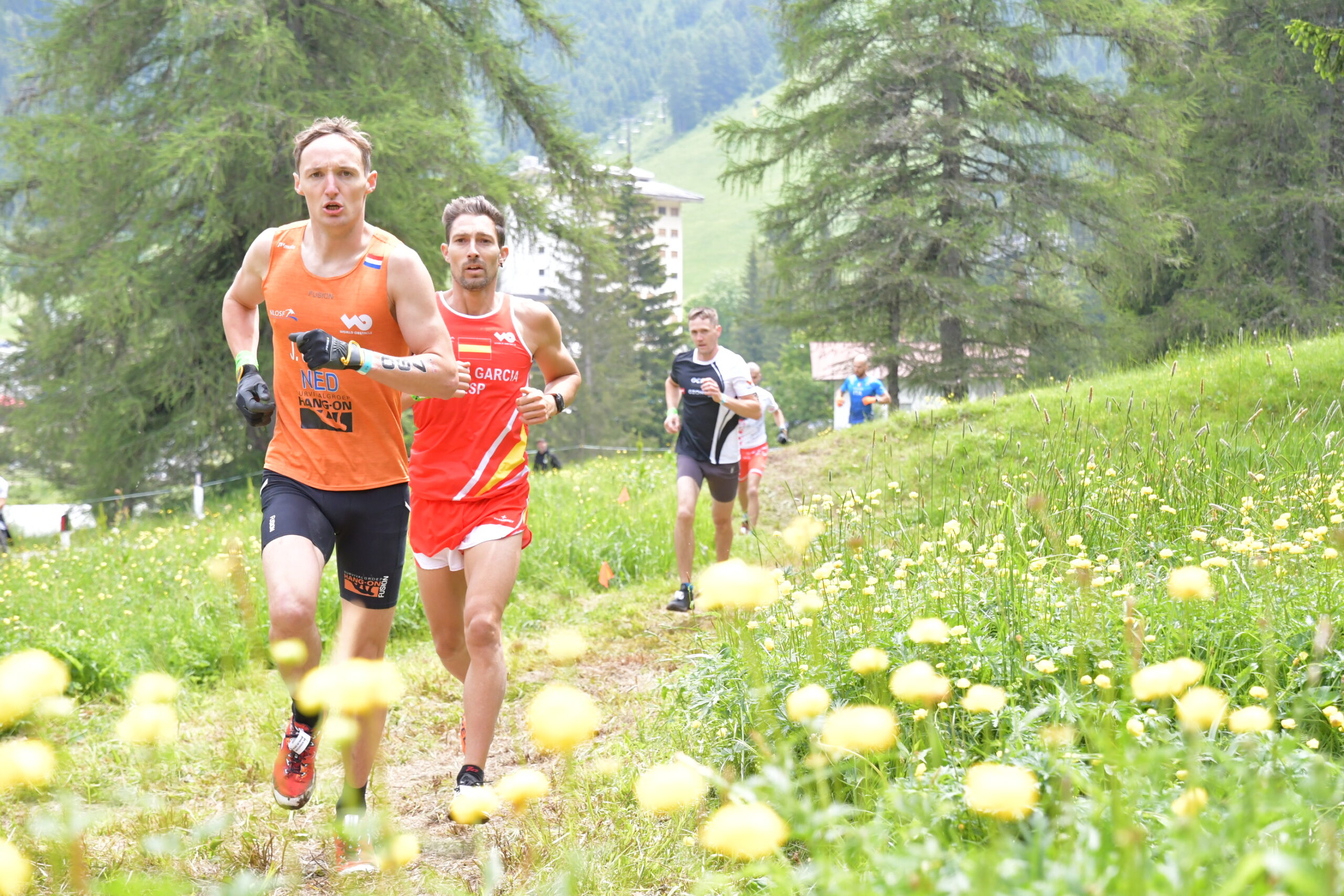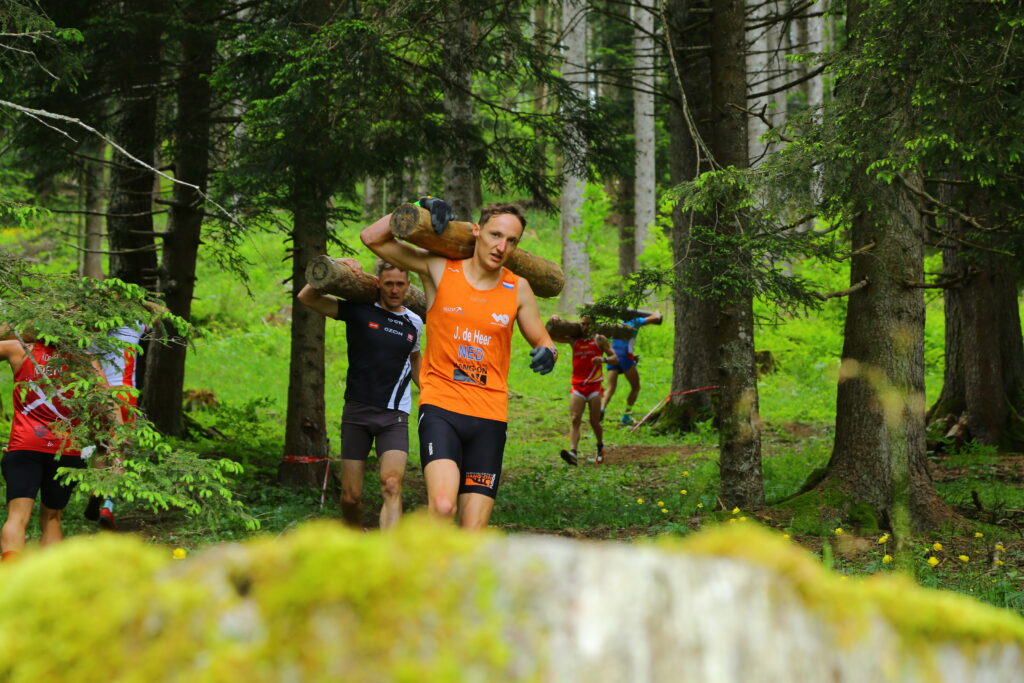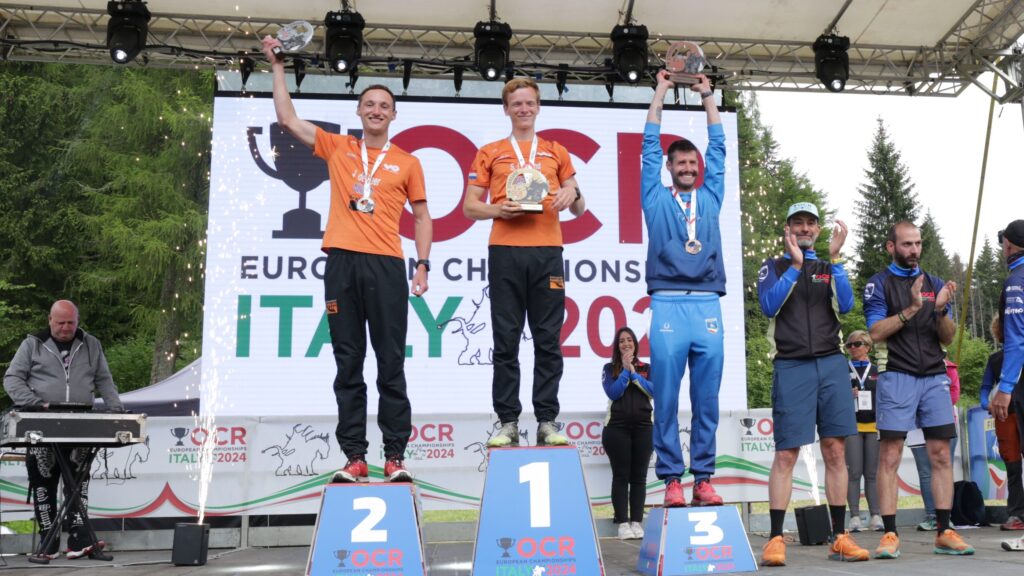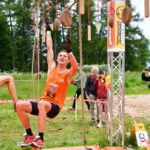I went to the European Championships with a clear mission: to defend my European title. It was a weekend with ups and downs, but now, a week later, I can conclude that I ran one of my best European Championships ever! Two silver medals, just behind teammate Stijn, and team gold!
Race Summary
Most of the race details have already been covered, but here’s a brief summary:
Short course: Not my best race, I lacked sharpness, but still secured a solid second place.
Standard course: 12 km through the mountains. I had a fantastic race. I had to fight my way forward from the second starting group to ultimately finish second, just 3 (!) seconds behind the winner. I never thought I could be so strong in a mountain race.
Team race: Put the two best athletes in Europe together with powerhouse Frank Oosterom in a team, and you have an almost unbeatable trio!
Looking back at this European Championship, I can only conclude one thing: our preparation and training methods work. The gap between us and the rest of Europe is widening. Therefore, in this blog post, I want to focus on how I prepared for this race over the past few months.

Training for the European Championships
Last year’s European Championships were in Hungary. That course suited me perfectly: flat terrain with very technical obstacles. I won the short course and finished second, 30 seconds behind, in the 12 km race. After that race, it was clear to me that I still had significant gains to make in endurance. I planned my fall training to improve this; I scheduled several long survival runs (>20 km) and took the road bike out more often to increase training hours. This paid off at the Dutch Survivalrun Championships, where I won all three distances. Additionally, racing for 8 hours in the Arabian desert went better than expected.
After the Dutch Survivalrun Championships in April, my preparation became increasingly specific. The survivalrun season had provided a good base of fitness and muscle endurance for the obstacles. The challenge now was to convert this into a specific race form for an OCR race in the mountains.

Obstacle Training
After 20 years of survival running, my endurance and coordination in obstacles are excellent. However, OCR requires a bit more explosiveness, so I added specific upper body strength training twice a week: one session focused on maximum strength and one on explosiveness. On Saturdays, the Hang On training was always on the schedule, where running was alternated with obstacles.
Running Training
Since the European Championships were in the mountains this year, it required different qualities than the flat terrains of Hungary. I did more tempo training in hilly terrain. Consequently, I trained short intervals less often, but I expected to need top speed less. Last year, I made the mistake of focusing too much on this, possibly leading to excessive anaerobic adaptations.
A Typical Training Week
- Monday: Cycling
- Tuesday: Long intervals + strength training
- Wednesday: Endurance run, sometimes speedwork
- Thursday: Tempo training (or short intervals) + strength training
- Friday: Endurance run
- Saturday: Hang On obstacle training
- Sunday: Long endurance run, sometimes with a tempo workout

The Last Two Weeks
Thanks to my job, I had the fortune to be in the Alps two weeks before the race. This allowed me to acclimate well and for my body to get used to the biomechanical load of running in the mountains. The last Sunday before the race, I did one more tempo session on the course with Stijn Lagrand, Frank Ooserom, and Martin Bäckström (SWE). After that, I tapered to ensure I was well-rested at the start.
Race Days
On Friday, during the short course, I lacked that sharp edge. I’m not entirely sure why. Maybe it was due to the hard taper, but the fact that the start was postponed three times by 15 minutes also played a significant role. By delaying the start repeatedly, my warm-up ended up being much too long (9 km!). Additionally, my nutrition wasn’t perfect; my goal was to eat my last solid food 3 hours before the race. Due to the delays, this ended up being 4 hours, and despite a few gels, this was too long to keep my energy levels up.
On Saturday, everything clicked perfectly. I felt incredibly strong on the climbs over the pistes. My legs didn’t seem to tire, and I could fully utilize my endurance. In a strange way, the short course might have helped with this. My legs felt sharp, and I was mentally fully engaged. Nutrition also worked out well. I used 250 ml of ONE carbo+ (hypertonic) and one gel. This kept me strong until the final kilometers.
The team race is always a special event. It’s not the most important race of the weekend, but more a test of who still has something left in the tank after two days of maximum racing. A race with three people where you have to leverage each other’s strengths as much as possible. I wasn’t very fit anymore, but luckily we had Frank, who took care of all the strength sections while the “show horses,” Stijn and I, ran around.
Reflections and Future Plans
Overall, I’m very happy with my form during this past European Championship. However, those 3 seconds in the standard course still hurt. I would have loved to fight it out on the course from the same starting group. Hopefully, this lesson is enough for the organization to come up with a proper start ranking next year.
What’s Next
I’m not entirely sure what my season will look like after the summer, but I have a few things in mind: OCRWC in Costa Rica, the Dutch Trail Running Championships, and the Spartan Race in Croatia. Or, if I’m super fit, maybe even the trifecta. This also depends on the sponsors, so if you want to support my athletic ambitions, please get in touch!





